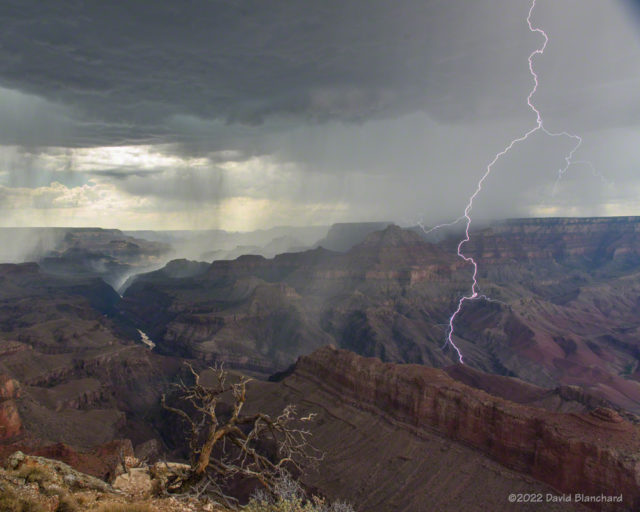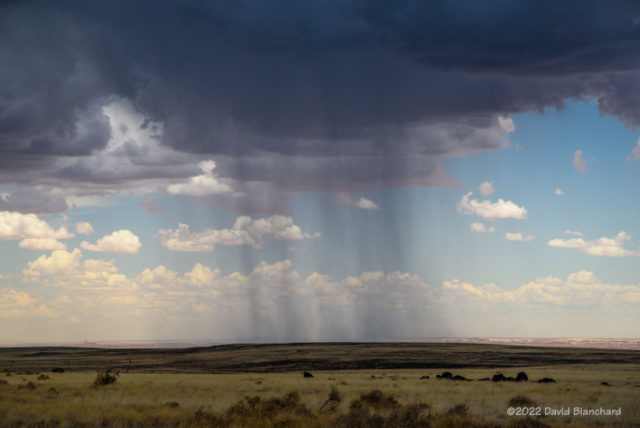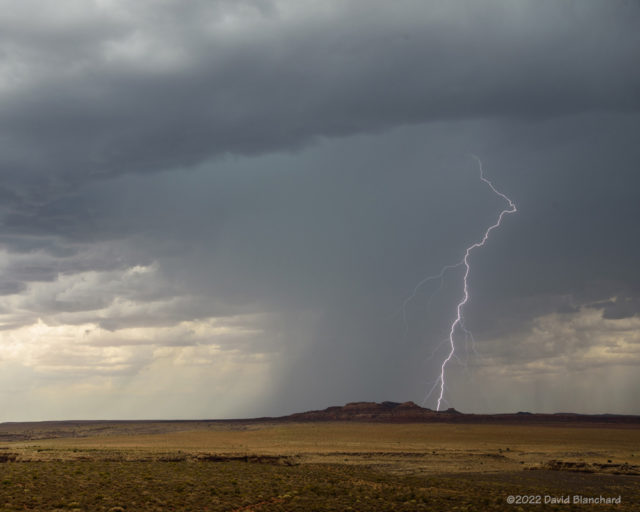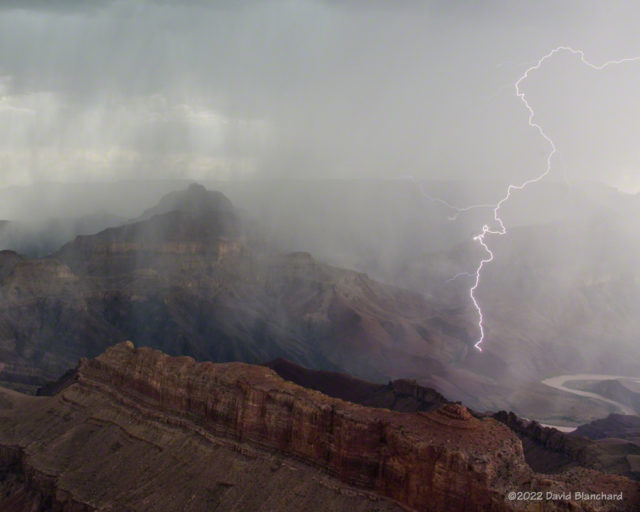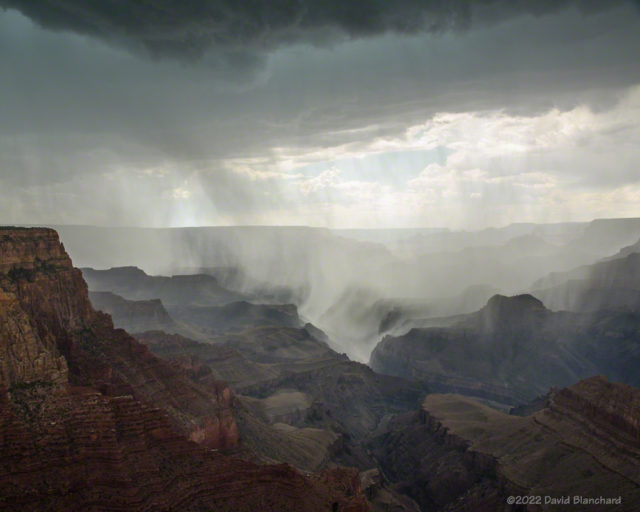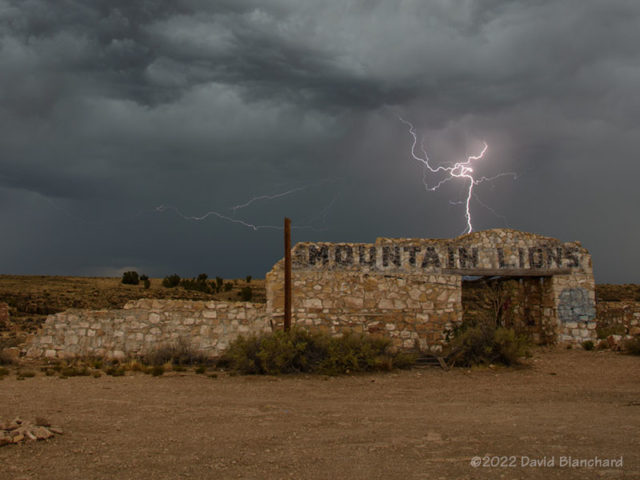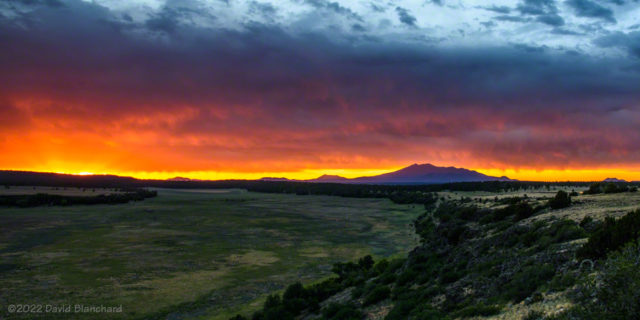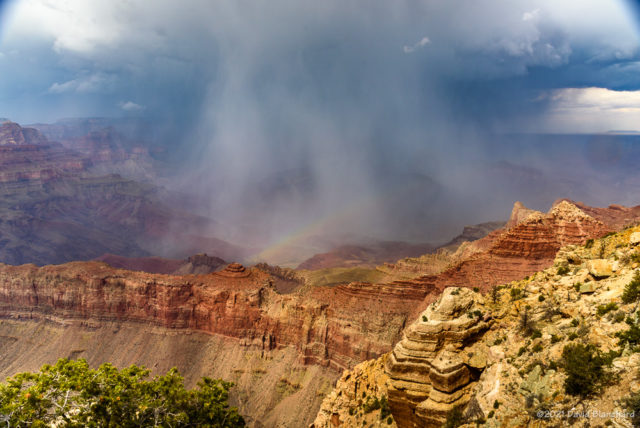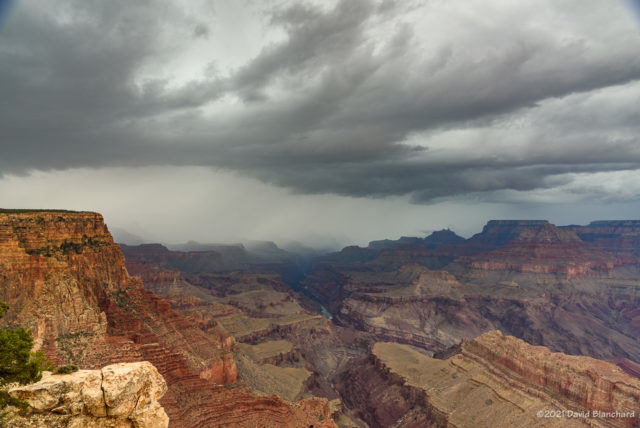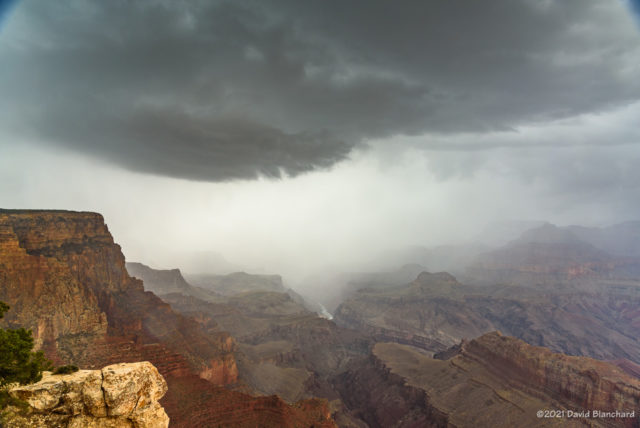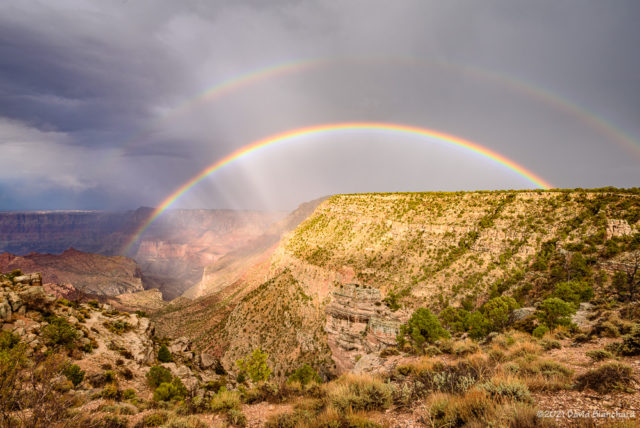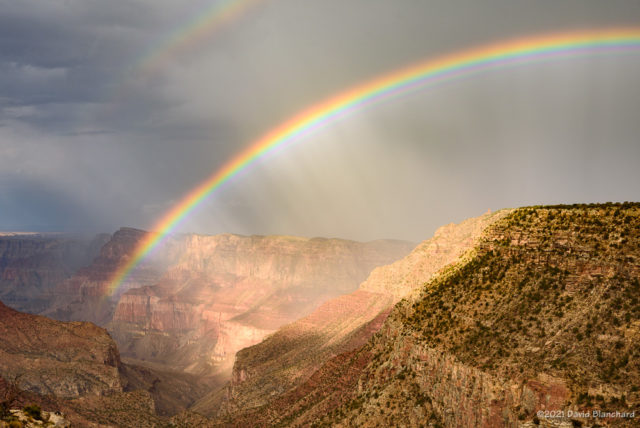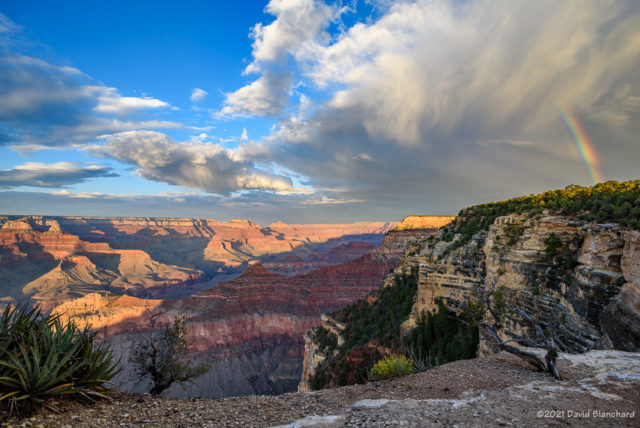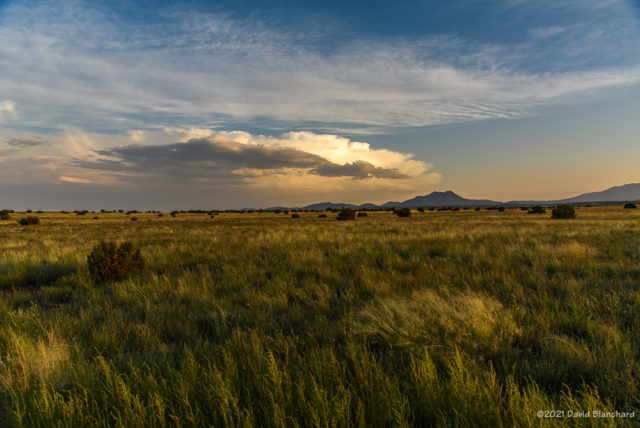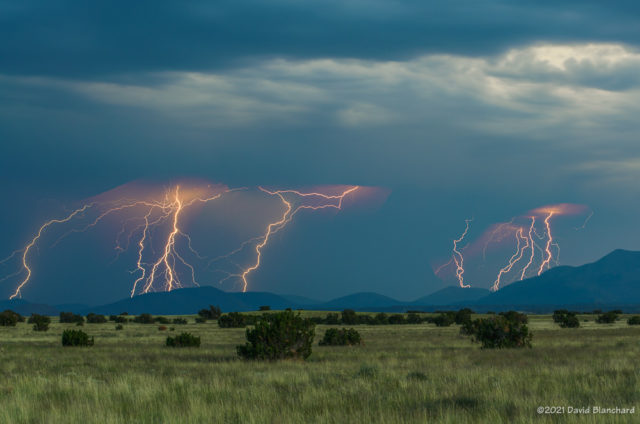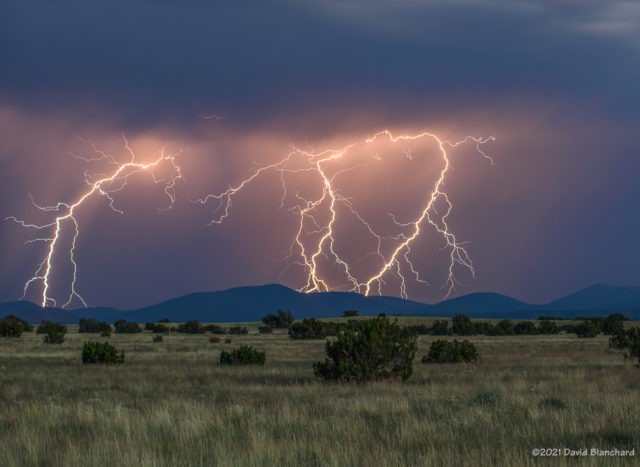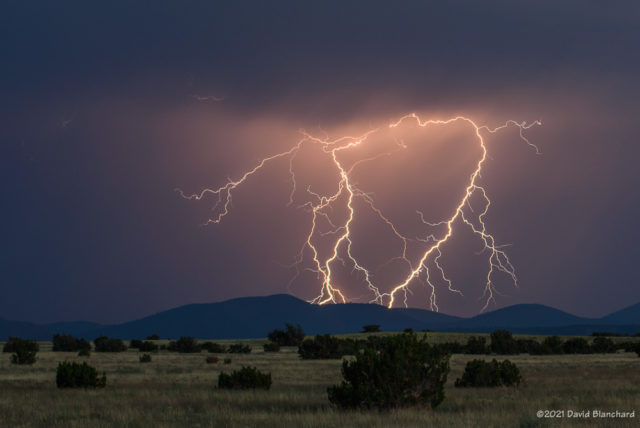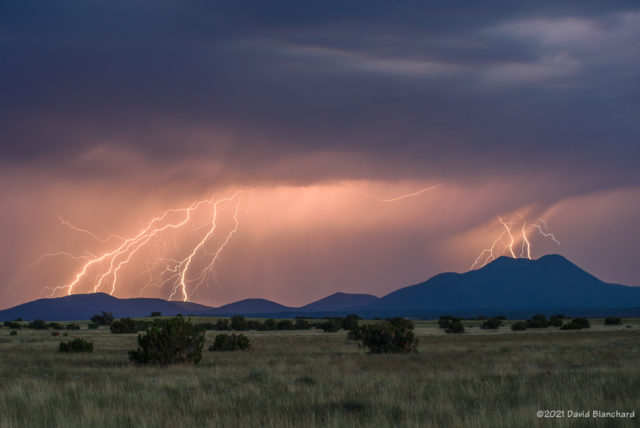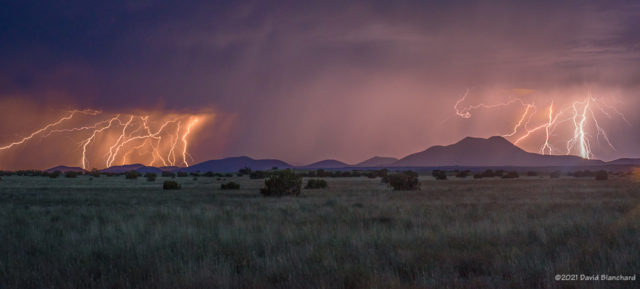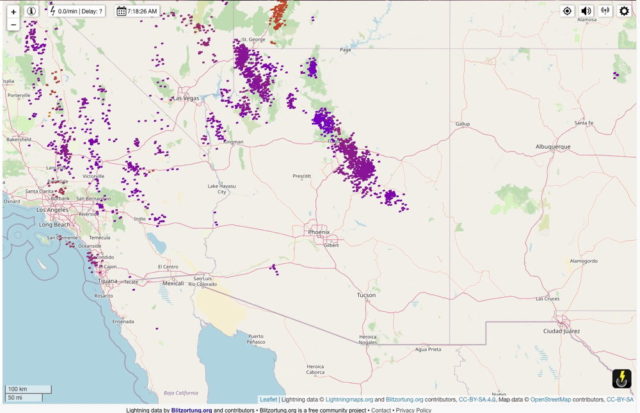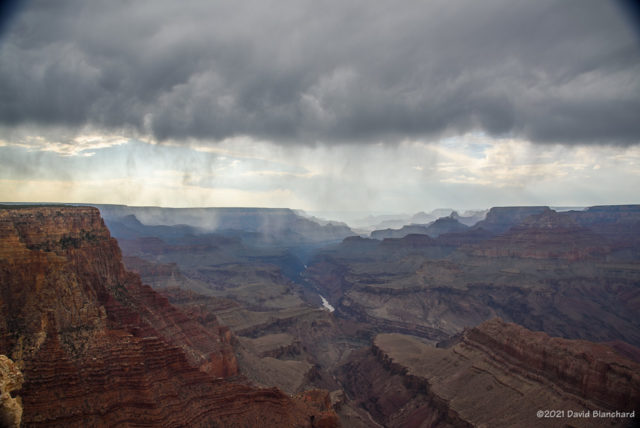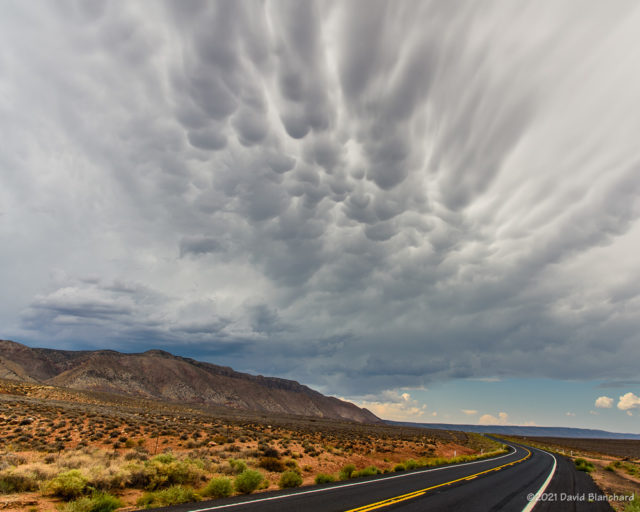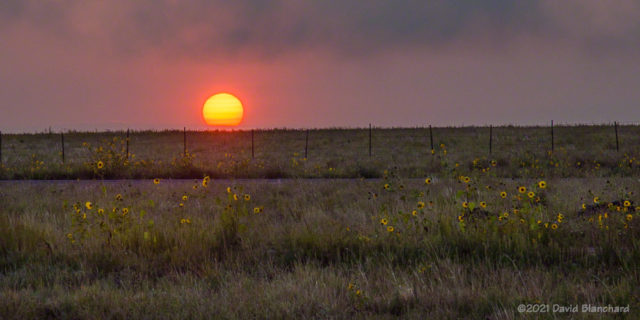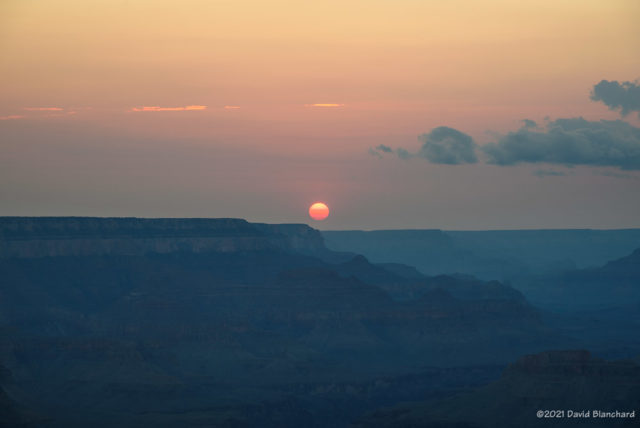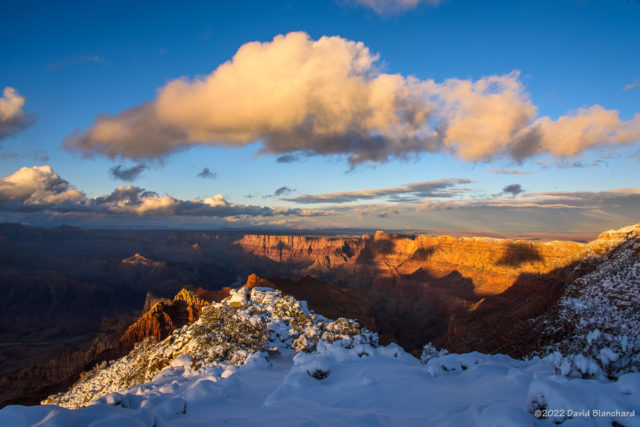
A low-end winter storm moved across Arizona a few days ago and brought some snow to the higher terrain. Flagstaff only received a trace of snow while locations to the west and northwest received more. With that in mind, we headed to Grand Canyon National Park for some afternoon and sunset photography.
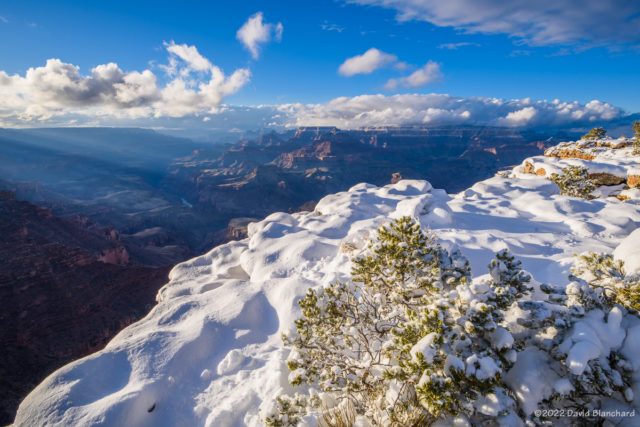
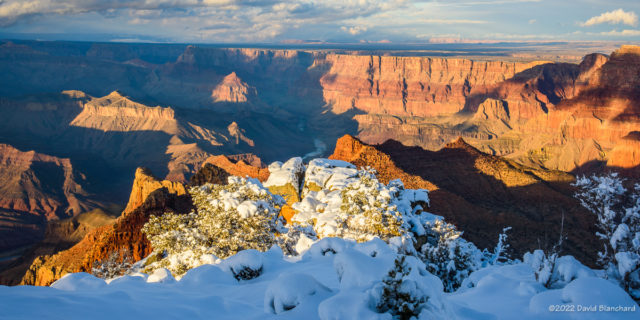
We went to Lipan Point where about 2-3 inches of snow had fallen. The clouds were already clearing and that was a bit disappointing as we had hoped to see the clouds lifting out of the depths of the canyon. There were still plenty of clouds above the canyon rim and the lowering sun resulting in very nice sunset colors on both the clouds and the walls of the canyon.
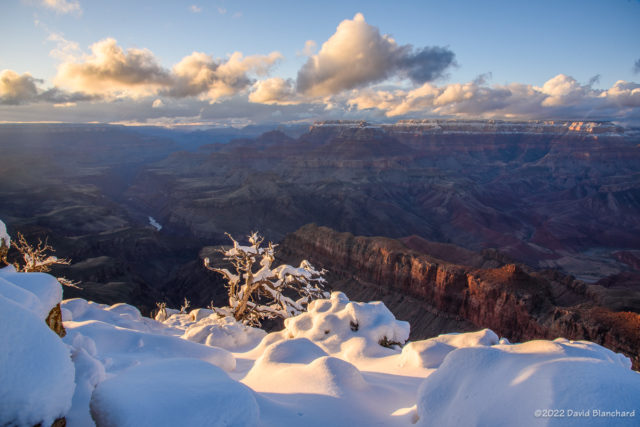
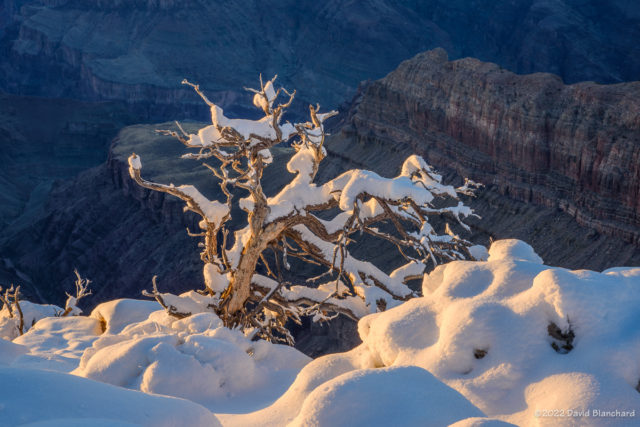
We left only moments after sunset since the parking lot and road out of the park were already turning into black ice. Moments later we had dropped enough in elevation that we had dry roads for the drive back home.
